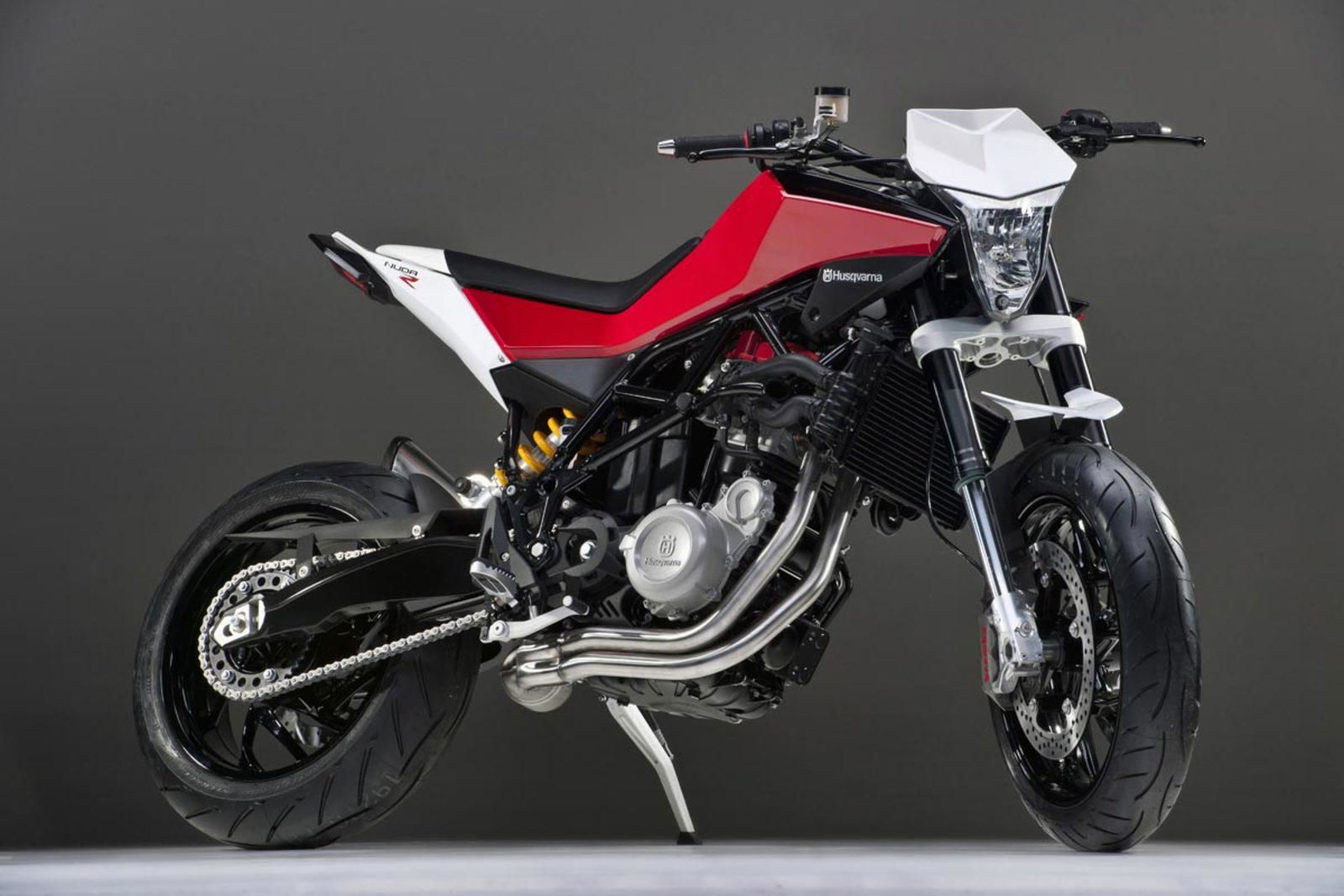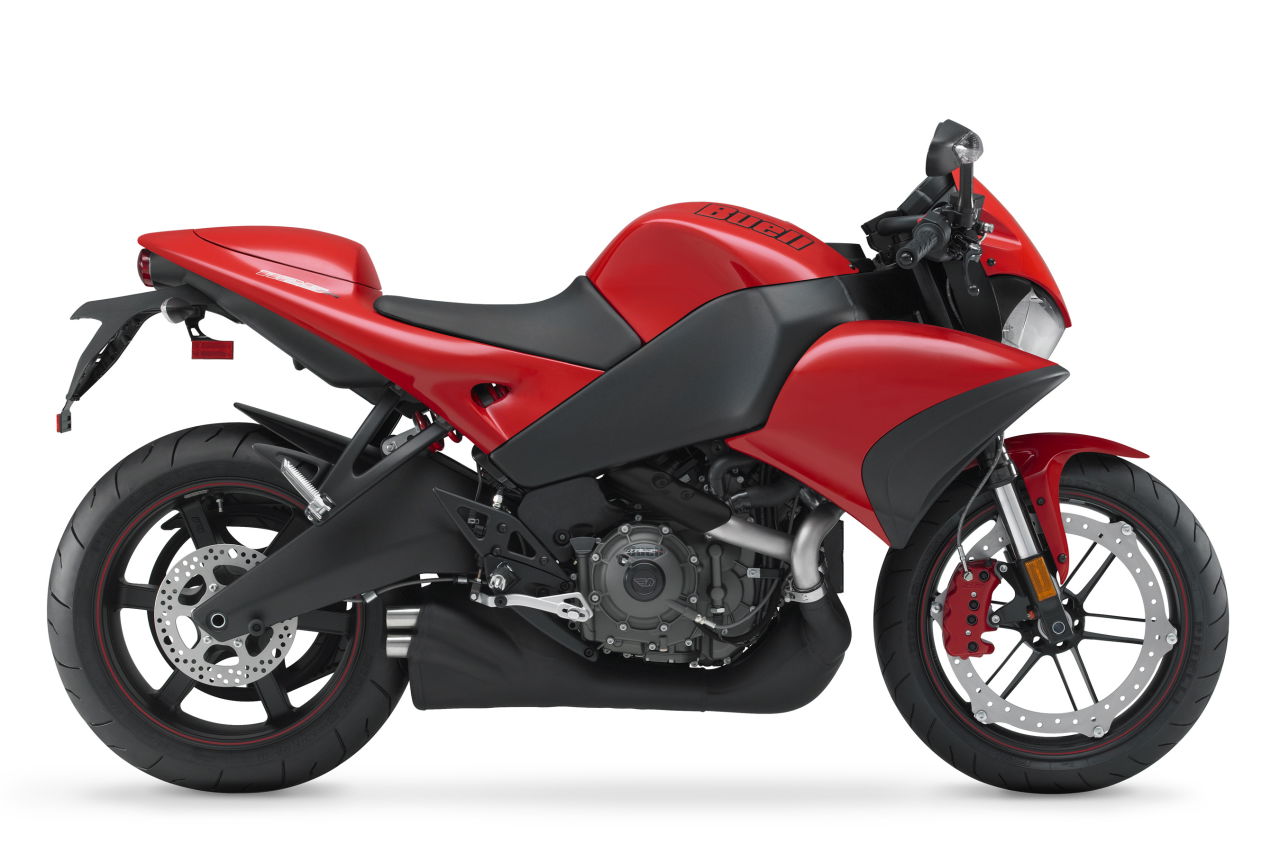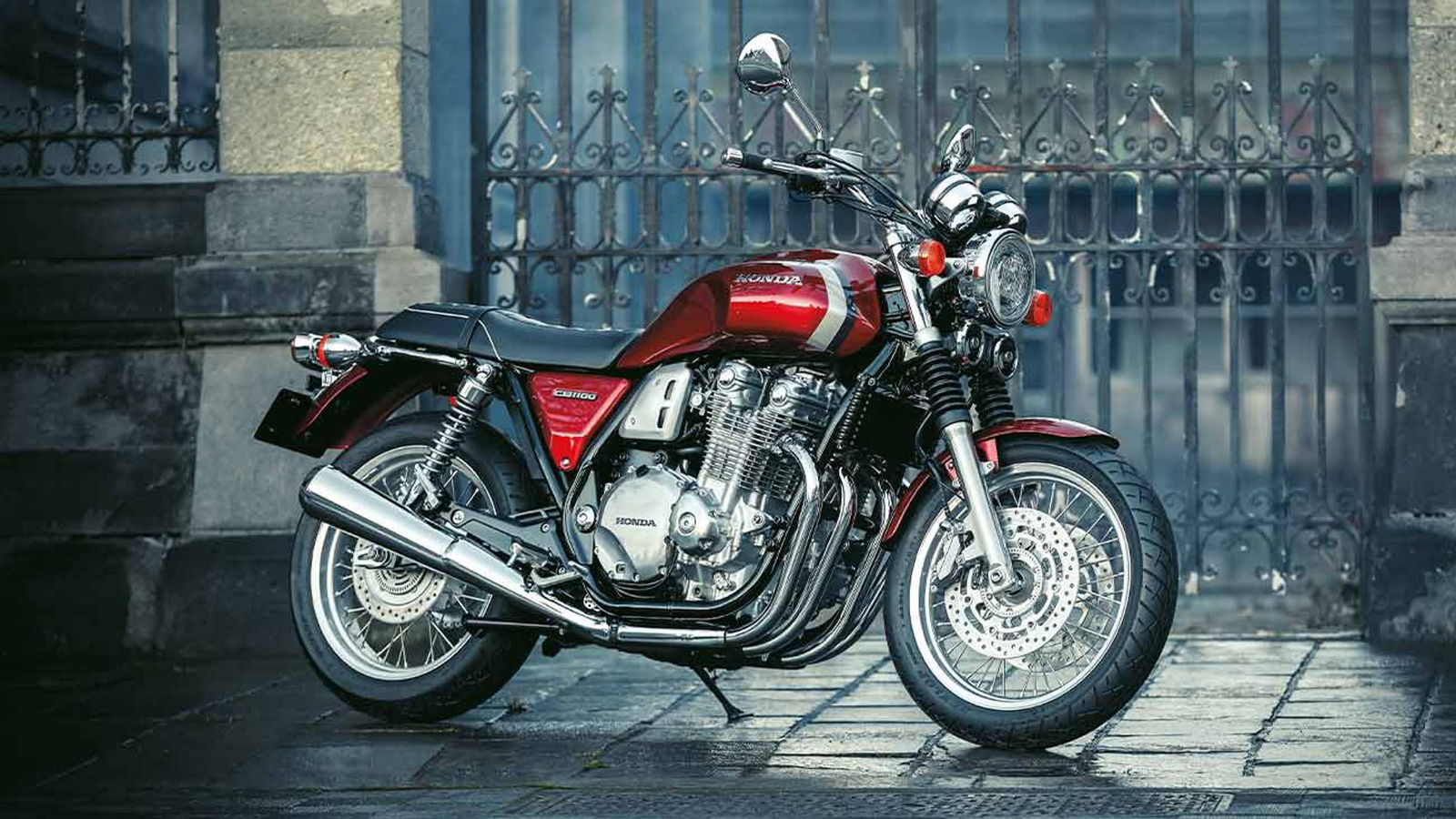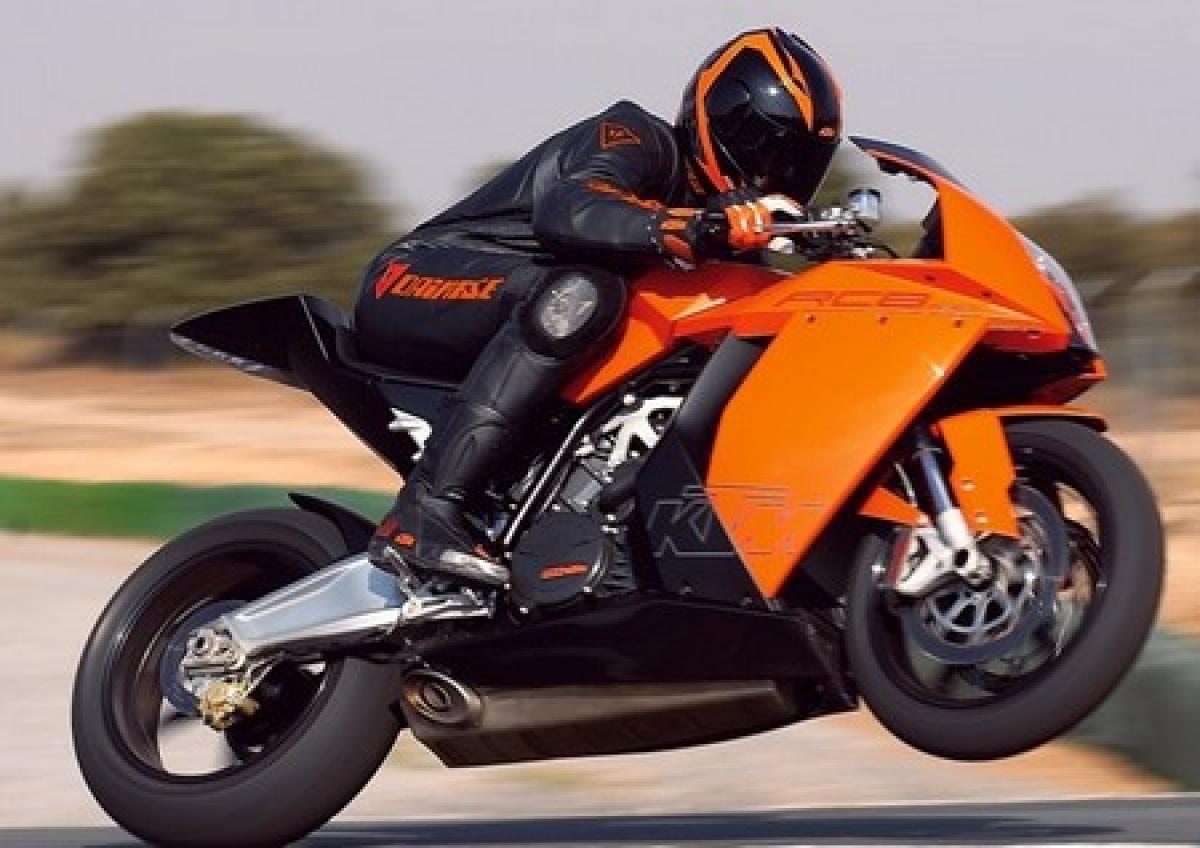(Un)lucky Losers | 10 Motorcycle flops that deserve a second chance
Motorcycle history is riddled with as many flops as there are 'big ones' but what if they could have their time again in the modern era...?

It’s new motorcycle season, so whether we get the first look at upcoming new models such as the practical Triumph Tiger 660, start looking forward once again to bike shows like EICMA, or even start saving for just released new models such as Suzuki’s new GSX-S1000GT sports-tourer, the hot topic on ever biker’s lips is ‘Which new motorcycles are around the corner?’
Which got us thinking – not just about possible NEW motorcycles, but also OLD ones which were famous flops first time around, but which maybe - just maybe - stand a better chance if launched today.
Take Suzuki’s infamous B-King, for example. The supposedly supercharged (it wasn’t in the end) super naked show bike which, when finally put into production in 2007, spectacularly failed to live up to expectations simply for being hyped so excessively.
Or Gilera’s radical, single front forked CX125 of 1990 which looked like something from Tron but performed so conventionally (and expensively) just 1000 were built before being canned less than a year later.
Some revived bikes, however, might find their niche and you favour – here’s our Top 10 requests, in reverse order…

10. Harley-Davidson XR1200 (or maybe 1250)
Most of us know the ill-fated story of the XR1200: a bold, Harley Europe led project to build a decent-handling performance ‘Hog’ to suit European tastes yet still inspired by H-D’s legendary XR750 flat track racer.
The XR1200, in 2008, was the result, with tuned 1200 Sportster V-twin power, decent handling and great looks. And yet… it bombed, particularly in the US.
An updated XR1200R followed in 2010, with improved multi-adjustable suspension which did little better and the whole project was canned in 2012. Which is a shame as it wasn’t a bad bike, just not, at 90bhp, quite powerful enough, being too heavy to impress against European rivals and not backed enough by Harley USA to succeed Stateside.
Today, however, with HD USA fully into modern global bikes (as proven by the PanAm and LiveWire), plenty of experience to draw on and a new 120bhp, liquid-cooled Sportster S to base it on, a retro roadster XR1250 could be fabulous.

9. Husqvarna Nuda 900 (or maybe 890)
Few modern bike brand stories are as chequered as that of historic Swedish off-road specialists Husqvarna. Bought by Cagiva in 1987 with production moving to Varese in Italy, it was then sold to BMW in 2007 who, after various difficulties, including falling foul of Italian trade unions, disposed of it to KTM in 2013.
Which was a shame as the latest bikes today are little more than re-styled Dukes while under BMW ownership its Nuda 900, although a sales flop, was sensational. Essentially a forerunner of today’s F900R but better equipped and better looking, the Nuda 900 was based on the F800 but enlarged, tuned to 105bhp and fitted with Brembos and more.
In short, pretty much exactly what the KTM 790 Duke was nearly a decade later. Dial in a bit of Steve McQueen styling (then Husky had been experimenting with that, too, with its Moab, concept bike) and today it’d have both the KTM 890 and BMW F900R beat. Easily.

8. Suzuki B-King
One of motorcycling's more famous faux pas, the Suzuki B-King wasn't so much a bad model per se, it was more that it wasn't quite what was expected - like that 5ft 5, blonde lady you arranged to meet off Tinder only to find she's a 47-year old man with a beard.
While it didn't help that its name conjures images of a flame-grilled whopper, the B-King was pitched as the wild 'hyper naked' version of the Suzuki Hayabusa, or in other words, a more attractive version of the Hayabusa.
But by the time it eventually reached dealerships in 2007 - some seven years(!!!) after it was first shown as a concept - it had been watered down rather significantly to a modest 164bhp. Quick for the time but while it had some cool traits, such as its prominent exhaust, it otherwise looked like an awkwardly modified naked.
So why would we give it a second go? Well, hypernakeds are all the rage these days and certainly more palatable than your average sportsbike, something Suzuki now sorely lacks from its model line-up. Moreover, once bitten, twice shy in that we wouldn't expect the world if it was promised and - besides - if the B-King (or maybe, C-King/Seeking/Carole King) it would need to be touching 200bhp to be competitive, so in reality we'd just be getting what we were expecting all those years ago.

7. Buell 1125 CR
Ah yes, Buell, Erik’s bold but bonkers pipedream which, some good ideas accepted, never quite worked out what it wanted to be… especially when Harley-Davidson took over and wedged in its Sportster V-twin engines.
Except… it very nearly struck gold at least onc. Buell’s last-gasp, Rotax-powered, 146bhp 1125R sportster was a really quite good (if odd looking) road sportster that never got a chance because Buell rushed the press launch with flawed bikes.
By the time it’s fuelling was sorted, its sister super-naked, the 1125 CR was available and (ridiculous low handlebars aside) was even better – it’s performance being more competitive, its style more distinctive. Sadly, that bike never really got a chance either, was sold uncomfortably through Harley dealers, never caught on in the US and the whole Buell operation was shut down after the CR had barely been around two years.
Today it’d stand a far better chance, which is handy because Buell has just risen from the grave for a third time…

6. Moto Morini 1200 Granpasso
One of the most unsung of the revived historic Italian brands finding its way again in the early-00s, Moto Morini was also actually one of the best and its final bike (sort of) was also among the most underrated.
Moto Morini was revived in 1999 before launching its first all-new bike, the 1187cc V-twin Corsaro in 2005. It was a more than decent bike, too, with 140bhp fiery bhp and good handling.
On the downside, it was let down with initially iffy fuelling, corporate underfunding and a lack of publicity and sales infrastructure. Better bikes followed: the retro Scrambler, the hi spec Corsaro Veloce (in 2006) and, latterly, in 2008 the Granpasso adventure sport.
Sadly, however, around the same time financial problems sent the whole concern into meltdown from which it has struggled since
Which is again a shame as the detuned, fine-handling, styling and fun Granpasso was largely ahead of its time (Triumph Tiger 1050 Sport and BMW S1000XR anyone?) and deserved better. Even today its performance, versatility, style and fun would stack up well…

5. Yamaha MT-01
One of the boldest and most beautifully crafted bikes of the early Noughties was also one of the most misunderstood and, well, unsuccessful.
The big, brash MT-01 (Yamaha’s first ‘Masters of Torque’ machine), was initially a show/concept bike which Yamaha bravely put into production in 2005, although we’re still not entirely sure why.
And what a bike! At its heart was a monster, low-revving, 1700cc, push-rod V-twin put into an exquisite (but big) roadster chassis complete with multi-adjustable suspension, radial brakes and the best of everything. Even its dash was jewel-like.
The experience, meanwhile, was like nothing else: a cacophony of rumbling grunt, an almost regal ride; a thunderous soundtrack and a sense of occasion like nothing else.
Sadly, cynics also described it as underwhelming slow, overbearingly heavy and eye-wateringly expensive, so no-one bought one. The Philistines. Today, in this retro-driven world it might do better, although it’d never have got through Euro5…

4. Honda CB1000 ‘Big One’
Oh get over yourselves already… it’s funny to think that the late 1990s Japanese obsession with big four cylinder retros likes the XJR1200 and CB1300, plus the later GSX1400 and ZRX11 and1200, were all beaten to the punch by one of the biggest and best of all – the 1992 CB1000 ‘Big One’.
And in light of how feeble and largely dismal Honda’s current offerings on the class are, ie the CB1100 and CB1000R, Big H could do worse than revive it today.
At the time, the Big One, ahem, flopped because it was expensive and arguably before its time. But it was also fabulously put together (HRC were involved, if memory serves), gloriously grunty and smooth thanks to its detuned CBR1000F liquid-cooled four, surprisingly fine handling and, with proportions seemingly 10% larger than anything else, had a road presence like nothing else.
Churn it out today with a more reasonable ticket price (assuming, as with most others, it could be made to get through Euro5) and Honda would have the biggest and best retro four of all.

3. Aprilia RST 1000 Futura
There has long been a large gap in Aprilia's range, though this has been plugged more recently by the arrival of the 660 platform, which has brought us the RS 660, Tuono and Tuareg.
However, these models - plus its 125cc range and scooter models - all ultimately look up to their bigger brothers, the Aprilia RSV4 and Aprilia Tuono V4. Considered the enthusiast's sportsbike/hypernaked, the Aprilia duo have been around for a while but though they aren't the newest offerings in their classes, they remain class acts.
However, it has always struck us as rather odd that Aprilia has never put the brilliant V4 architecture to broader use, either by bringing us its rival to the Ducati Multistrada V4 or taking on Sports Touring models like the KTM 1290 Super Duke GT or BMW R 1250 RS.
The latter would effort would at least see Aprilia attempt to do justice for the Aprilia RST 1000 Futura, a short-lived model fitted with the engine of the RSV Mille. It was quick, was practical and felt more related to a sportsbike than its rivals. But then it also looked a bit oddball, wasn't terribly comfortable and was too compromising compared to its rivals.
Still, we trust Aprilia will have learned its lessons and even if it hasn't, it will still have that V4 engine to fall back on...

2. KTM RC8 (or maybe RC 1290)
KTM’s long-awaited superbike version of its big V-twin was plagued by delays, finally launched in 2008 and was such a failure it was deleted by 2010.
The RC8 suffered from a comically bad timing having been built with the intention to compete in the WorldSBK Championship… however, a shift in regulations while it was being completed meant it would have never been competitive, thus nixing its reason d’être.
Nevertheless, for a first effort at a sportsbike the RC8 - though a bit of a handful - was a pretty solid, albeit underpowered first effort and has since won a cultish following since.
Time has moved on though and KTM - now winning races in MotoGP - has the architecture of the 1290 Super Duke R, which has had enduring cries of an RC revival ever since
If it uses the chassis no-how from both KTM’s other smaller RCs and its MotoGP experience, equip it with the latest electronics and style it like Brad Binder and Miguel Oliveira’s factory machine and you’d have a sure-fire winner, wouldn’t you?

1. Ducati Sport Classic
Probably no surprise as the Sport Classic has regularly been touted as a bike before its time. But when you also add that to the current paucity of Ducati’s retro roadster line-up – when surely it should be right up there with Triumph – the argument for bringing back the Sport Classics gets stronger still.
No wonder they’re so in-demand used… The Sport Classics were first launched in 2005 initially with the faired Paul Smart Limited Edition but also the unfaired, more affordable Sport 1000.
Both being 992cc, air-cooled V-twins with bags of style, handling and a decent 92bhp. The twin seat GT arrived a year later. With hindsight all were brilliant. Trouble was, they didn’t sell.
The Sport was solo only and uncomfortable, the Smart expensive, the more practical GT less of a looker and, besides, retro bikes had yet to catch on. Ducati meddled with the recipes over the next few years finally coming up with versions that were stylish, practical and affordable all at the same time but by then, 2010, it was too late and Ducati pulled the plug.
All, however, were also classier, better-looking, better performing, better built and more cohesively thought out than any Scrambler. Shame

